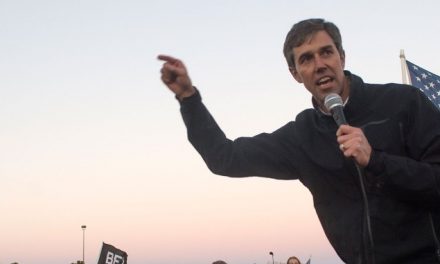For most of the 2016 presidential election cycle, it was hard to discern that Donald Trump had any real campaign at all. He lagged behind in almost every metric, from surrogates to field offices to fundraising to television advertisements. What we learned later was that he was being very successful and economical by focusing his messaging on Facebook. By targeting just the voters he wanted to reach (e.g., gun owners in Wisconsin, pick-up drivers in Pennsylvania), he saved a lot of money. He also was able to pitch them ads that only they could see. To the rest of us, his ad campaign was invisible.
This time around, the Democrats know where to look. Bully Pulpit Interactive (BPI), a Democratic communications firm, has been tracking Trump’s Facebook spending, and they’ve discovered that he’s heavily focused on the issue of immigration.
An analysis of BPI data from March 30 to May 18 shows heavy spending from Trump on immigration-related Facebook ads, with a significant lag among his Democratic rivals.
“Democratic candidates have hardly invested in the issue online,” Coffey Clark said.
During those 50 days, Trump spent $231,061 on immigration ads on Facebook—more than seven times the amount five top-tier Democratic contenders invested in total. Sen. Kamala Harris (D-CA) spent $15,793, while Sens. Elizabeth Warren (D-MA) and Bernie Sanders (I-VT) spent $11,006 and $4,830, respectively, according to BPI’s data. Former Vice President Joe Biden and South Bend Mayor Pete Buttigieg did not spend any money on immigration ads on the platform during that time.
But it’s not just candidates with early fundraising decisions causing some immigration advocates worry. Major Democratic groups like Priorities USA and the Democratic National Committee have not prioritized Facebook spending on immigration, suggesting a disconnect between the party’s rhetoric and investment.
One advantage of doing advertising this way is that it allows a politician to use a polarizing issue to their advantage without alienating or animating the opposing side. If Trump were to run television ads that demonize immigrants, we’d all see those ads either while watching the programs on which they air or on the cable news and social media. By choosing instead to run them on Facebook, we generally don’t see them at all even on our Facebook pages. With the backlash minimized, Trump can be more aggressive in the messages he chooses.
One way to counter this is to collect as many of these ads as can be found and push them out to the broader un-targeted public. Another way to counter it is to emulate it. Democrats can use the same platform to push pro-immigration messages without inviting much backlash. Finally, the Democrats can respond to, counter and hopefully neutralize Trump’s messaging by targeting some of the same audiences with completely different pitches. Rather than concede certain segments of the vote to Trump, they can focus on their areas of strength. Rural voters can be pitched with anti-tariff advertising or promises to revive local economies with more infrastructure investment and antitrust enforcement. Health care, education and retirement security messages can be effective in every community. The opioid crisis is a major concern in much of Trump country, and he has not kept his promises to combat the problem.
There are a lot of ways the Democrats can be smarter this time around than they were in 2016. It won’t be easy to match Trump’s focus with so many candidates pursuing their own strategies, but there are also eleventy-billion Democratic candidates and only one incumbent president. Collectively, they can swamp his messaging even if they aren’t very well coordinated in their approach.







